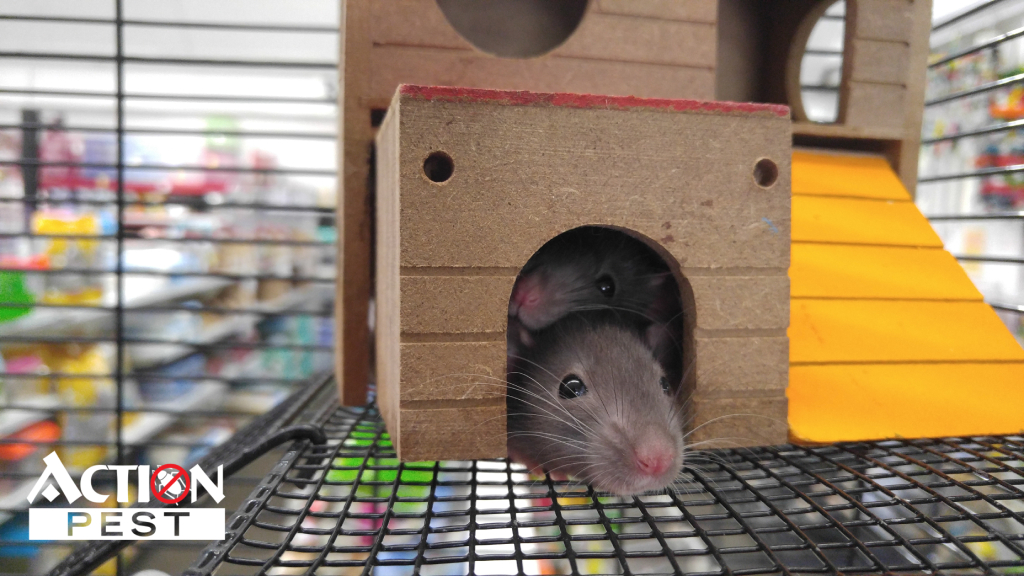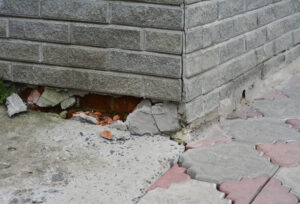
Mice are a really common problem in urban areas. When we think of mice, we often picture dark alleyways, trash cans, and black garbage bags, but they can sometimes be much closer than we think. Mice have tiny bodies that can fit through the tiniest of cracks and crevices. These tiny rodents are on the lookout for food and water all the time, and if they find an entry point into your home, they can wreak havoc in the kitchen, closet or destroy soft furnishings over time.
You can take a few steps to stop them from entering your house and a few more that can help you with mice control. But, chances are by the time you discover them or pick their behaviours, they would’ve already nested inside your house. Mice not only destroy furniture and contaminate food supplies, but they also carry various illnesses that pose a health hazard.
Before we enter into pest control mice solutions, let’s take a quick look at the entry points of mice, to avoid all this hassle in the first place.
How to Locate Mice Entry Points: A Thorough Check
It’s always advised you take a thorough look at your property and inspect the trash cans outside, look for any burrows in the garden and be on the lookout for footprints. Start from the inside, look for the most common signs like droppings and grease marks on the walls. The type of house you live in will also shape your search.
Wear protective clothing like gloves, just in case you come across mice excreta. Taking a look at the attic, basement, and around kitchen cabinets and closets. This is where you will find most of the signs. If you have any leaking food, holes in containers, or chewed-up clothes and furniture, this is a great tell that the mice have already entered your home. For effective mice control, it is important to block their entry points.
Common Mice Entry Points
When we see mice inside our homes, our first question is how did they get inside? And How to find mice entry points?
There are a few places mice can enter your house. We’ve compiled a list of common mice entry points.
Foundation
Mice aren’t the most steady travellers. They usually travel on existing paths and along the edge of a wall or a boundary. While doing so, they can come across cracks in your foundation and might go inside because of their curious nature. If you haven’t had renovations for years, it’s time to check for any cracks and holes in the old foundation.
This can also be a means to enter your basement. If you have any tiny basement windows that open on the ground level, make sure you keep them locked and use other methods of ventilation.

Garage Door
By far the easiest entry point is your garage. It’s wide, opens often, and rarely has any people there all the time. A messy and cluttered space is also a good hiding place for mice. So, make sure your garage space is well organized and clean. If your garage door has any gaps on the side or at the bottom, install a rubber seal.

Chimney and Attic Windows
Mice, rats, and other rodents are good climbers. They can easily climb into chimneys and any openings left for a fireplace or steam. They can easily enter through ventilation openings in the attic and make their way down into your bedroom or kitchen.

Air Vents
Mice can also climb in through air vents. They have been doing so in many homes and find these places great nesting places as well. Air vents offer plenty of space and security with access around the house. You can install meshes that can block sections of the air vents to prevent rodents from making it their home.
Toilet
It’s something out of your worst nightmare to discover a mouse swimming up the U-tube of your toilet, but as much as we hate to be the bearer of bad news, they have previously done so. Mice are notoriously good swimmers. They live in the sewers and can find ways up the sewage lines and pipes. If you suspect the mice have done so and find water splashed around the toilet or on the seat often, then the problem might be bigger than just your house and likely a sewage infestation.

Plumbing lines
Mice have claws that are strong enough to pull their body weight quickly while climbing. Mice can easily climb up the pipes that run on the outside of your house and many times, these pipes leave a small opening in the wall when they enter your kitchen and bathroom connections. Mice can easily squeeze their tiny bodies through these gaps and make their way directly into your kitchen.

Controlling The Infestation
Now that you’ve got an idea of how these rodents enter your house, you can start by blocking off these entry points using material that cannot be chewed. Avoid pressing foam into these gaps or any fabric/rubber fix. Use silicon or handy old mortar to seal them permanently.
If you think mice are still in your house and hear crawling noises at night, or chewed bits and pieces around the house, you can use mouse traps to control the infestation and take measures like covering leftovers and taking the trash out earlier in the night.
These fixes will only help you control the infestation, but it’s not a permanent solution if these mice have made it a habit to stay indoors. The extent of a mice infestation can only be told by experienced pest control mice removing individuals.
Permanent Solution
It’s always advised to avoid these disease-carrying rodents as their excreta carries some of the most dangerous infections like the hantavirus. Mishandling and cleaning such surfaces with your bare hand can lead to inhaling the virus, which has been proven fatal in a few cases. Pest control services are the best way forward for a permanent and lasting solution.
A thorough inspection will not only remove mice but also help with any bugs, termites, and flies.
Contact ActionPest now, for the quickest relief from your bug problems and effective rodent control and rodent proofing of your house.







